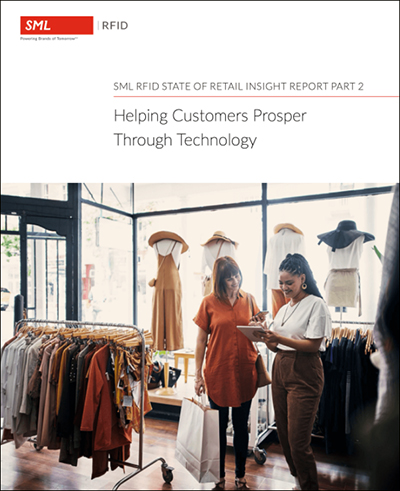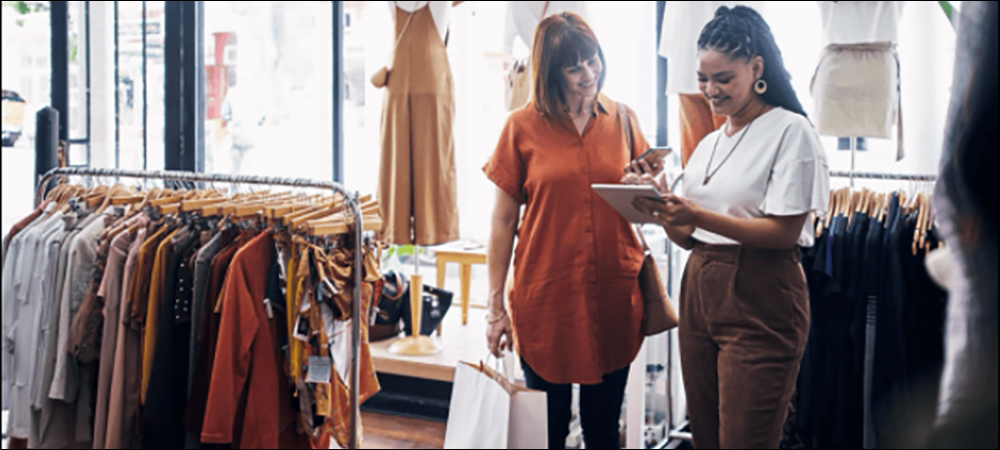SML Group, a provider of RFID retail solutions, has acquired Swedish retail technology firm Sumzed AB as part of a strategy to further expand its presence in item-level inventory management and operations into in-store experiences globally. SML has also announced the release of its white paper known as “State of Retail Insight Report Part 2: Helping Customers Prosper Through Technology.” That report finds a growing demand for the kinds of solutions SML intends to offer with its Sumzed acquisition.
Retail Insight Report
In November 2021, SML released part one of its “State of Retail Insight Report,” which found members of the retail market turning to RFID as a tool to resume operations following COVID-19 shutdowns. Part two extends that research into how retailers are looking ahead, beyond the pandemic, in some cases leveraging UHF RFID tags on goods to meet omnichannel sales demands, as well as to continue driving customers into physical stores with in-store experiences, according to Dean Frew, SML Group’s chief technology officer and senior VP of RFID solutions
 For this latest report, SML surveyed approximately 500 brands and retailers to gather data about the demands and RFID plans faced by retailers. The company found that the responses reinforced the view that inventory-management demand continues its growth as shoppers increasingly purchase goods from a variety of channels, including online purchasing, as well as “buy online, pickup in store” (BOPIS), and returning and exchanging apparel.
For this latest report, SML surveyed approximately 500 brands and retailers to gather data about the demands and RFID plans faced by retailers. The company found that the responses reinforced the view that inventory-management demand continues its growth as shoppers increasingly purchase goods from a variety of channels, including online purchasing, as well as “buy online, pickup in store” (BOPIS), and returning and exchanging apparel.
One key learning that was more unexpected, Frew reports, was how much retailers are struggling with the need for labor. To address the shortage of available workers, many companies are turning to automation systems that can make it easier and more efficient to serve customers’ needs. “Anything you can do to make labor more efficient is also very much of interest,” he explains. “This is something we kind of knew intuitively, but it came out in the survey.” Additionally, he says, retailers have expressed the same need during customer discussions with SML.
In previous years, Frew says, many companies were learning how RFID technology could improve inventory management and store operations. Now, he adds, retailers are looking at building new functionality into existing inventory-management systems. According to the latest survey, inventory management is now fundamental. Companies that had RFID in place when the pandemic began found themselves ahead of the curve, Frew says, “because they had already made the decision to go down the item-level RFID route before COVID.” The effort now is not only to improve stock counting or serve customer demands for omnichannel purchases, but also to move into returns and other in-store offerings.
When it comes to RFID use for item-level inventory tracking, Frew says, that application serves as the bread-and-butter solution that provides a return on a company’s investment (ROI). The more stores improve their inventory accuracy, the more they can boost stock availability, and subsequently improve sales and profit. The next step, he says, is to expand into solutions that previously would have been too costly to address individually, such as automatic checkout, smart mirrors and automated content about apparel for sale in-store.
Sumzed Acquisition
According to SML, its acquisition of Sumzed furthers its ability to meet these growing needs. As a smart store technology provider, Gothenburg-based Sumzed will continue to offer its interactive cloud-based solutions to retailers, now as part of the SML Clarity software platform. Sumzed sells three kinds of in-store automation technology: price checkers, fitting room solutions and point-of-information technology. Its focus is on enhancing the customer experience in physical stores with digital-based solutions, which can include touchscreens and applications to help connect shoppers with information regarding products, or with sales personnel who can help them.
All Sumzed products will now be sold under SML’s Clarity brand. “I would say we’re going to have more emphasis on the item-level side of things,” Frew states, “so it could be a 2D barcode, it could be an RFID tag, it could be NFC, it could be any of those things.” Sumzed’s solutions include touchscreens for price checking at store fronts, for interaction in dressing rooms and for access to other product content.
At store fronts, customers can use a Clarity Experience-enabled device to obtain pricing information. The system can leverage a 2D or 3D barcode scanner to scan a product’s label and thereby display its price. Some customers will employ the technology with an RFID tag for products that come with the UHF RFID tag built into their packaging or price label. A reader in the device would capture each tag ID and display pricing or other information about the product.
In fitting rooms, Clarity Experience offers a touchscreen solution with which customers can not only view information about garments, such as their price, but also interact with sales associates. By scanning the barcode or RFID tag in a product’s label, then pressing the prompt on the touchscreen, a customer can send a text message to an employee’s Android-based phone, indicating they need help—for instance, requesting another size of a product they are trying on, to be delivered to their fitting room.
A third solution offered previously by Sumzed, and now as Clarity Experience, involves point-of-information touchscreens that customers can use to view additional information about products, such as inventory levels of a particular garment, or content including images or videos. SML plans to bring the company’s solutions to a worldwide audience, Frew says, as part of the Clarity platform.
In the past, Frew notes, RFID-based systems such as magic mirrors have been adopted only rarely. “You couldn’t generate an ROI big enough,” he explains, to justify the cost of adopting customer experience RFID systems alone. When added to a full implementation of an inventory-management and store operations solution, however, the adoption of customer-experience applications can yield an easier ROI.
“We believe we’re going to be able to create more value for our clients leveraging their existing investment in item-level technology,” Frew states. The acquisition of Sumzed “gives us additional tools on our toolbelt to bring to clients at low marginal cost.” He adds that the acquisition furthers SML’s efforts to make Clarity not merely an inventory tool, but rather a full retail operations platform. “So a lot of customers who are using Clarity could add these functions.”
Frew says the company has found that while many early adopters of RFID for inventory management and store operations are large retail chains, there has also been a push from smaller retailers that may catch up with the larger early adopters. “More and more of the smaller retailers are asking for everything at the same time,” he states. “They’re asking for inventory. They’re asking for BOPIS. They’re asking for customer experience. They’re asking for self-checkout. They’re asking for supply chain.” That trend is underway in Europe and North America, he says, as well as in Asia.
Frew likens the inventory-management solutions in Clarity to a house’s foundation and plumbing. “Now we start actually decorating the house with some of these things like BOPIS and self-checkout,” he says, “and some of these customer-experience technologies,” such as those offered by Sumzed. “Obviously, they’re seeing benefit, as in attracting more customers back into their stores following COVID.”
At the recent NRF 2022 conference, SML showcased its solution being used by Stadium, including Zebra Technologies handheld readers and Android devices to manage stock counts, execute replenishment and receive goods. The Clarity application includes a handheld application and a cloud-based platform. The deployment employed Microsoft Azure, managed by SML, for its cloud delivery service platform.


